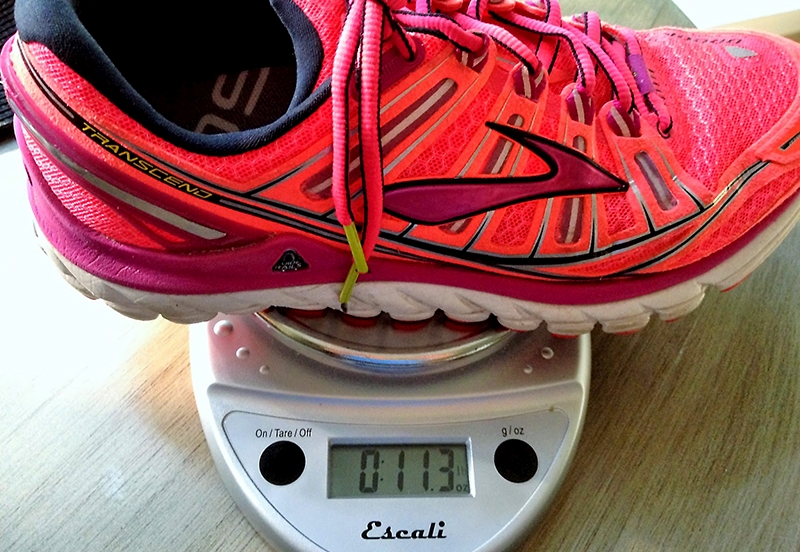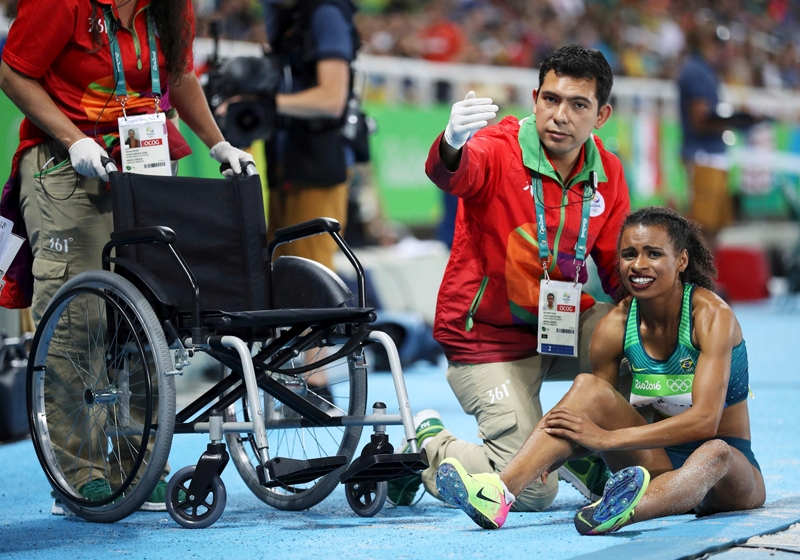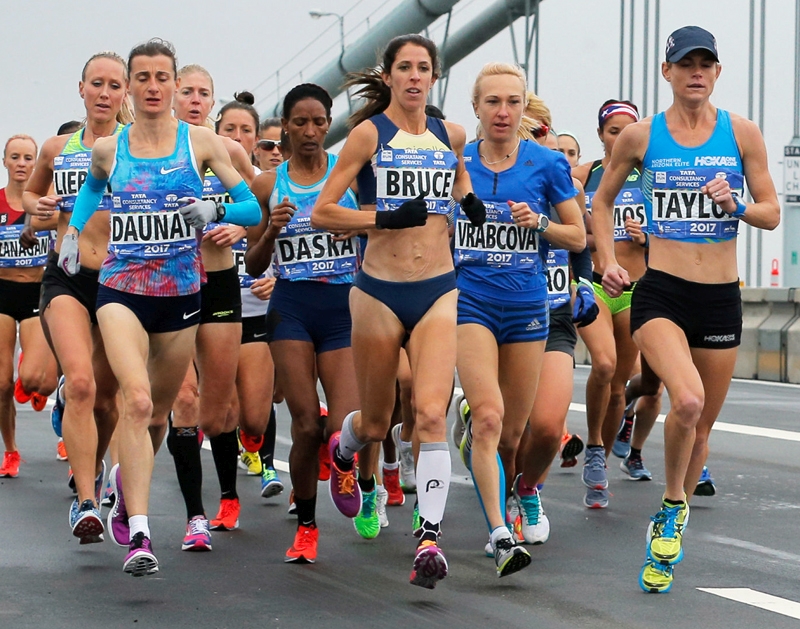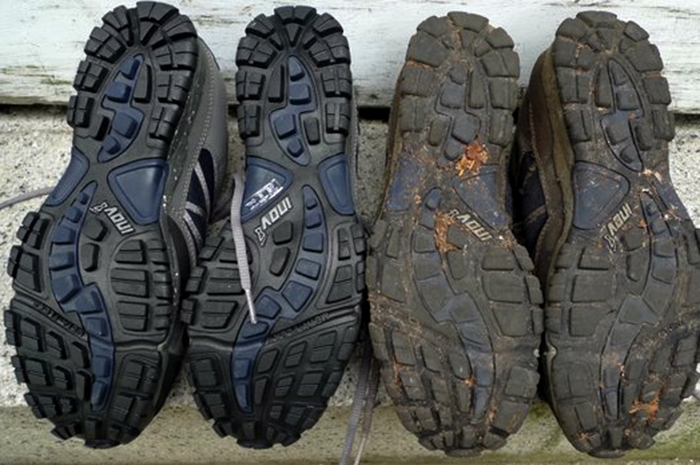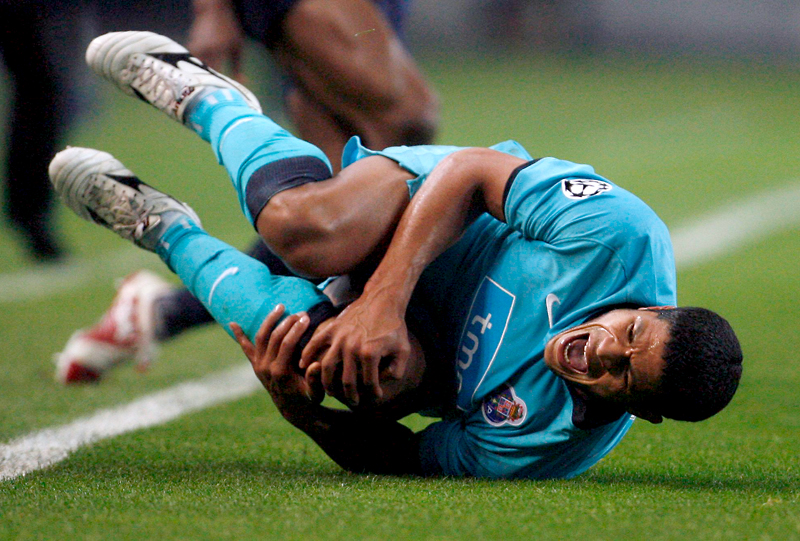You are viewing 1 of your 1 free articles. For unlimited access take a risk-free trial
Running injury prevention: shoe facts, shoe fiction

How does running shoe design and construction affect injury risk, and how should this affect your shoe choices? Andrew Hamilton looks at what the recent research has to say
Running is one of the most popular sports and fitness activities across the globe. However, while it is a simple sport and one that is readily accessible, it carries a significant risk of injury. Reported injury rates vary according to the period of time analysed but a comprehensive review study estimated rates of running-related injuries in athletes of between 19% and 79%(1). Although there has been plenty of research investigating training-related risk factors as distance, frequency, training intensity, the knowledge about footwear design and related risk factors is still quite limited.Shoe construction
When it comes to an analysis of running injury risk, factors such as training mileage, intensity and frequency are relatively easy to study; these are well-defined parameters, which can be easily compared across different studies and populations. Shoe construction and design however is a different matter. Although there have been a number of recent studies comparing minimalist running shoes with conventional shoes (see this article as an example), there is still relatively little information about the fundamentals of running shoe design and injury risk.This is largely due to the vast number of different shoe designs on the market, and the fact that even within a manufacturer’s model range, shoe design often changes year on year. Indeed, many runners report they feel overwhelmed by the possible choices. However, despite the proclamations by shoe manufacturers of better stability and motion control, lower impact forces, more efficient running gait (stride pattern), the plain truth is that many running (and walking) related injuries still occur. Moreover, despite the changing technology, running injury incidence has NOT changed noticeably over the last few decades(2). So what factors in shoe construction are relevant for injury risk? Let’s take a look at what some of the recent evidence suggests.
*Cushioning and impact forces
Most runner believe that well-cushioned shoes are effective at reducing injury risk. The theory is that by absorbing and dissipating impact forces generated by footstrike (which can easily be three times the runner’s body weight), the impacts transmitted to the lower limb are reduced along with injury risk. But how true is this? In one review study on this topic, Canadian scientists analysed data accumulated over a 25-year period on impact forces and foot pronation and the development of running-related injuries(3). They found many contradictions in the experimental results and the established theories and concluded: ‘Theoretical, experimental and epidemiological evidence on impact forces shows that impact forces are NOT important factors in the development of chronic and/or acute running-related injuries’.Instead, they postulated that impact forces during foot strike actually serve as input signals, which help produce ‘muscle tuning’ shortly before the next contact with the ground. This tuning helps to minimize soft-tissue vibration and/or reduce joint and tendon loading. In other words, increasing cushioning and reducing foot strike impact interferes seems to interfere with your body’s ability to alter and adapt its neuromuscular response and maintain its preferred joint movement path for a given movement task, which effectively results in a less than optimal running gait.
Further evidence that increased heel/midsole cushioning in NOT a panacea for reducing running injury risk comes from a Finnish study published last year(4). Researchers compared impact loading and ‘spring-like’ mechanics of running using a conventional running shoe and a highly-cushioned ‘maximalist’ shoe at two training speeds (10 and 14.5 kmh). What they discovered was that the highly-cushioned maximalist shoes altered the spring-like running mechanics – but to amplify rather than attenuate impact loading! This surprising outcome was even more pronounced at 14.5kmh, where ground reaction force impact peak and loading rates were 10.7% and 12.3% greater respectively in the maximalist shoe compared to the conventional shoe. The researchers attributed the greater impact loading with the maximalist shoes to a stiffer leg during landing compared to that of running with the conventional shoes, which would explain why shoes with more cushioning do not protect against impact-related running injuries.
*Cushioning and plantar pressure
Although the evidence suggests that extra heel and midsole cushioning doesn’t reduce general running injury risk, is there an argument for increased cushioning in conditions such as plantar faciitis (learn more about this condition in runners here), which is aggravated by pressure applied to the foot sole? In a study by Australian scientists, researchers investigated ‘in-shoe’ plantar pressure loading and comfort in 22 athletes while running in two popular neutral-motion cushioned running shoes recommended for athletes with cavus feet – the ‘Asics Nimbus 6’ and the ‘Brooks Glycerin 3’(5).Compared with a control shoe, both the cushioned running shoes significantly reduced peak pressure and the total pressure loading during each stride (by 17% to 33%). However pressure reduction was not uniform; the Brooks Glycerin most effectively reduced pressure beneath the whole foot and forefoot while the Asics Nimbus most effectively reduced rearfoot pressure. Also, both of these shoes reduced force at the forefoot by 6% and increased it at the midfoot. These results suggest that neutral-cushioned running shoes are effective at reducing plantar pressures in athletes with high-arch feet, justifying their general recommendation over standard shoes. However the regional differences in measured pressure reduction indicate that neutral-cushioned running shoe recommendation should shift from being categorical in nature to being based more on location of any injury or elevated plantar pressure. In plain English, the location of any extra cushioning has to effectively alleviate the pressure points causing plantar faciitis.
*Heel height and injury
Running shoes are available in a wide range of heel-to-toe drops (the height difference between the forward-most and rear-most parts of the inside of the shoe, where the foot actually rests). While this heel-to-toe drop has been shown to influence the footstrike pattern in runners, there’s been little research on its effect on injury risk. However, a 2016 study tracked 553 recreational runners for six months and sought to answer the following(6):- Does the heel-to-toe drop of standard cushioned running shoes influence injury risk?
- Is there a relationship between training volume, heel-to-toe drop and injury risk?
*Lateral stiffness
An important but often overlooked factor in shoe design is lateral stiffness – how resistant the shoe is to torsional twisting around the toe-to-heel axis (see figure 1). A very recent study on 1025 military cadets investigated the relationship between torsional stiffness and lower extremity musculoskeletal injury(7). Tracking the cadets over a 9-week period, the researchers found that wearing shoes with moderate lateral torsional stiffness were 49% less likely to incur any type of lower extremity injury and 52% less likely to incur an overuse lower extremity injury than cadets wearing shoes with minimal or extreme lateral torsional stiffness, both of which were statistically significant observations. This suggests that shoes need to have enough torsional stiffness to accommodate foot movement while preventing excessive movement (ie too little stiffness). Since lateral stiffness declines as shoes wear, runners should be aware that high-mileage shoes may significantly increase injury risk (more later).Figure 1: Depiction of lateral (torsional) stiffness in running shoes

Lower later stiffness increases ease of rotation in direction of arrows
*Midsole bending stiffness and metatarsal/plantar loading
In addition to lateral torsional stiffness, midsole stiffness (the ease with which the heel can be lifted while toes remain on the ground) also affects injury risk. In a study published earlier this year, Canadian researchers investigated if lower-limb joint work is redistributed when running in a shoe with increased midsole bending stiffness (compared to a control shoe)(8). Thirteen recreational runners ran on a treadmill at 7.8mph under two shoe conditions while motion capture and force platform data were collected:- Shod in commercially available running shoes.
- Shod in the same shoes with carbon fiber inserts to increase midsole bending stiffness.
*Closure mechanism/lacing
Another commonly overlooked and simple but important factor is shoe closure mechanism. In a very recent study on running shoe selection by consumers, researchers found that runners seeking to avoid an injury should select shoes that fit really well with a good closure mechanism, which ensures a comfortable and snug fit(9). In fact, this was deemed MORE important for injury prevention than selecting a running shoe from a gait analysis or by relying on recommendation from shoe store staff! In other words, don’t be duped by a high-tech running analysis. If the shoe you’re trying on doesn’t feel snug a secure, it may well NOT be suitable for you despite what the computer says!What constitutes the best closure mechanism? Chinese researchers compared similarly constructed running shoes but with either conventional shoelaces or using an elastic/Velcro fastening system(10). They found that the elastic-covered running shoes had a lower perceived comfort rating in terms of shoe length, width, heel cup fitting, and forefoot cushioning. The elastic-covered running shoes also recorded higher peak plantar pressure in the lateral side of the forefoot, as well as larger maximum rear-foot pronation. By contrast, the laced shoes helped runners obtain better shoe fit, increased comfort, and decreased maximum pronation and plantar pressure.
Lacing pattern is also important for comfort and stability. Research shows that compared with a regular six-eyelet technique (or using even fewer eyelets), seven-eyelet lacing results in a significant enhancement of perceived stability without differences in perceived comfort(11). This is relevant as many runners fail to utilize all the available eyelets when lacing their shoes (see figure 2). All runners should also be encouraged to experiment with different lacing patterns to find one that feels most snug and comfortable.
Figure 2: Seven-eyelet lacing

Many runners do not use all the available eyelets for lacing (as shown here – 6 rather than 7)
*Last but not least – REGULAR renewal!
Materials in running shoes deteriorate over time, which means that the ability of shoes to optimally control foot motion decreases as the miles clock up. However, research shows that most runners are unable to detect when to call time on their running shoes, with obvious implications for injury risk. An excellent study on this topic investigated whether the forces experienced by a runner’s foot increase after certain mileage (400 miles/640kms) and whether runners were able to detect changes in heel cushioning properties from subjective ‘feel’(12).Fifteen runners’ shoes were tested for midsole cushioning ability when brand new, and again after 160, 320, 480, and 640kms. At the same time points, the runners ran on a 42-meter indoor runway during which in-shoe plantar pressures and vertical forces were assessed. After running 480km, the runners experienced a 16% to 33% reduction in the amount of cushioning in the heel region of the midsole. This was reflected by durometer measurements, which showed a corresponding decrease in cushioning ability (increase in hardness). However, the runners were NOT able to detect these changes – ie the shoes ‘felt the same’, even though they had lost significant amounts of cushioning capacity.
The take-home message is that ALL runners need to replace their shoes on a regular ‘miles clocked up’ basis and not to rely on subjective feel to determine when shoes need replacing. This means keeping a tally of your mileage over time. For an objective measure of wear, the purchase of a durometer (an inexpensive device that can be used to measure midsole hardness/cushioning – but which will also give a handle on other aspects of wear such as torsional and midsole stiffness) is recommended.
Summary of key take-home points
- *Increased cushioning does NOT relate to reduced injury risk and should not be the ‘go-to’ option for runners seeking reduced injury risk. The exception is for runners suffering from plantar faciitis and related conditions; however, any increased cushioning needs to reduce pressure in the appropriate region of the sole.
- *A heel-to-toe drop of around 10mm reduces injury risk in regular runners but a flatter shoe may be more appropriate for occasional runners.
- *Lateral torsional stiffness should be moderate - neither excessive or too low.
- *Runners with a history of plantar or MTP injury should avoid shoes with high levels of midsole stiffness.
- *Lacing is the best closure mechanism and seven-eyelet lacing is recommended. Runners should be encouraged to experiment with lacing patterns to maximise comfort and stability.
- *Regular shoe renewal is a must – based on mileage, not subjective feel.
References
- Br J Sports Med. 2007;41(8):469–480
- Mil Med. 2015 Mar; 180(3):321-8
- Clin J Sport Med. 2001 Jan;11(1):2-9
- Sci Rep. 2018 Nov 30;8(1):17496
- Am J Sports Med. 2008; (36)11 2139-46
- American Journal of Sports Medicine 2016 44: 11, 2933-2940
- Am J Sports Med. 2019 Oct;47(12):2853-2862
- J Sci Med Sport. 2019 Nov;22(11):1272-1277
- J Foot Ankle Res. 2019 Aug 17;12:43
- J Sports Sci. 2011 Feb;29(4):373-9
- Res Sports Med. 2010 Jul;18(3):176-87
- Int J Sports Phys Ther. 2017 Aug;12(4):616-624
Newsletter Sign Up
Testimonials
Dr. Alexandra Fandetti-Robin, Back & Body Chiropractic
Elspeth Cowell MSCh DpodM SRCh HCPC reg
William Hunter, Nuffield Health
Newsletter Sign Up
Coaches Testimonials
Dr. Alexandra Fandetti-Robin, Back & Body Chiropractic
Elspeth Cowell MSCh DpodM SRCh HCPC reg
William Hunter, Nuffield Health
Keep up with latest sports science research and apply it to maximize performance
Today you have the chance to join a group of athletes, and sports coaches/trainers who all have something special in common...
They use the latest research to improve performance for themselves and their clients - both athletes and sports teams - with help from global specialists in the fields of sports science, sports medicine and sports psychology.
They do this by reading Sports Performance Bulletin, an easy-to-digest but serious-minded journal dedicated to high performance sports. SPB offers a wealth of information and insight into the latest research, in an easily-accessible and understood format, along with a wealth of practical recommendations.
*includes 3 coaching manuals
Get Inspired
All the latest techniques and approaches
Sports Performance Bulletin helps dedicated endurance athletes improve their performance. Sense-checking the latest sports science research, and sourcing evidence and case studies to support findings, Sports Performance Bulletin turns proven insights into easily digestible practical advice. Supporting athletes, coaches and professionals who wish to ensure their guidance and programmes are kept right up to date and based on credible science.
